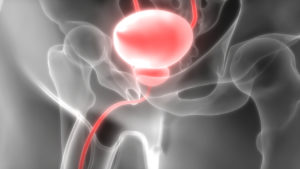Bladder Diverticulum
A bladder diverticulum is a pouch, pocket or sac that protrudes out of the bladder wall. There are two types of bladder diverticulum: congenital and acquired. Congenital means that the individual was born with this pouch; acquired means that the pouch formed from a health condition that has affected the bladder. Patients diagnosed with this condition, may have more than one pouch that has formed.
Congenital diverticula are usually diagnosed in childhood or by a prenatal ultrasound. Acquired bladder diverticula are often due to bladder outlet obstruction from an enlarged prostate, urethral stricture, or neurologic disease. They are often found incidentally on imaging for other conditions.
Bladder diverticulum symptoms
Bladder diverticula are often asymptomatic, but there can be urinary related symptoms. Some of the symptoms include:
- Urinary retention (inability to urinate).
- Urinary tract infection.
- Blood in the urine.
Diagnosis
Bladder diverticula are often diagnosed on imaging studies like a CT scan or ultrasound. Oftentimes, this is done while imaging for a different health concern (incidental finding). If bladder diverticulum is suspected, more specific tests will be ordered. These tests include:
Cystogram (x-ray test of the bladder with contrast dye).
Cystoscopy (placing a scope into the bladder via the urethra).
Treatment
Congenital or acquired diverticula do not always require treatment, particularly if they are not associated with urinary infections, bladder stones, or urinary reflux (backward flow of urine into the kidneys). When associated with bladder tumors, recurrent infection, or urinary retention, bladder diverticula will need treatment. For patients with diverticula and urinary obstruction, treatment will include relief of the obstruction and possible removal of the diverticulum. This condition can be treated with both open and laparoscopic surgery.
If you have any urologic conditions, contact Urology Austin to schedule an appointment.

